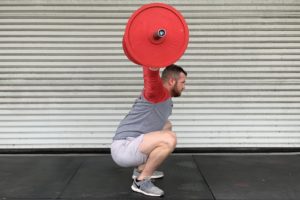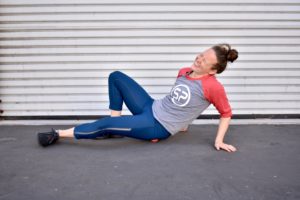Running injuries happen to every runner eventually. Overuse injuries come from something as simple as where the ground hits your foot.
There is a big conversation in the running world that revolves around foot strikes. What kind of foot strike is the best? Which kind is more efficient? Which foot strike will lead to fewer overuse injuries? Which foot strike allows you to run faster? Do you suffer from occasional shin splints or foot problems when running? If so, then keep reading!
To address this complex issue, we have to dive into the three different types of foot strike: Rearfoot/Heel Strike, Midfoot, and Forefoot/Toe Strike.
Rearfoot/ Heel Strike
This type of foot strike happens when your heel hits the ground first while running. By far, this is the most common type of running pattern in the recreational runner, but not necessarily the best or safest. It is typically associated with higher forces pushing back into the body, making this stride inefficient, but more importantly, causes higher stress forces back into the legs, leading to problems like “shin splints” or foot pain.
Midfoot Strike
This pattern is the holy grail of running. The runner’s midfoot makes contact with the ground first, ideally without too much pronation or supination. Biomechanically, it is energy-efficient and safe. In other words, there are fewer forces to cause overuse injuries.
Forefoot/Toe Strike
This pattern happens when the runner lands on the ball of the foot. This is the best running pattern for faster speeds, and you will see elite sprinters running on their toes or the balls of their feet. However, I do NOT recommend this running pattern for those of us going out for a typical run or jog. I recommend this running pattern for short bursts of sprints, especially if you’re new to it. It does put an increased load on the achilles and calf muscles and can lead to injuries in these areas or cramping in the foot.
How do you know IF you should change your strike pattern?
If you have been running and do not have a history of injuries and nothing hurts, DO NOT change your running pattern! If you have a history of foot pain, shin splints, achilles issues, or even back or hip pain due to your training, you might benefit from a change in foot strike pattern. A great place to start looking is your shoe wear pattern. Look at the soul of your favorite pair of running shoes. Where does the tread seem to be almost worn out? Usually, the culprit is overstriding, which leads to that rearfoot/heel strike pattern. You may want to shift where you land towards the midfoot.
Okay, you have decided to change your foot strike pattern. Now what?
Start small! Small changes add up to big deals while running. Start by shortening your stride length to avoid overstriding. You can try increasing your cadence to help that happen.
There is no one clear answer that is best for the entire population, but I hope this information helps. Everyone’s body, injury history, and goals are different, so the answer needs to be customized.
If you need help figuring out what you need or if you know what you want to change your form but don’t know how to do it, we are here to help. Click the link below and let our team help you reach that runner’s high.
As always, we hope this helps! For any questions and all suggestions, please email us at TeamSP@SportsPerformancePT.com
If you want to know more information about how we can help, get started with a FREE discovery phone call.
Click the following link -> DISCOVERY PHONE CALL.
– Dr. Stephanie

STAY CONNECTED
Instagram: CLICK HERE
Facebook: CLICK HERE
YouTube: CLICK HERE
Podcast: CLICK HERE
TUNE IN TO OUR PODCAST













